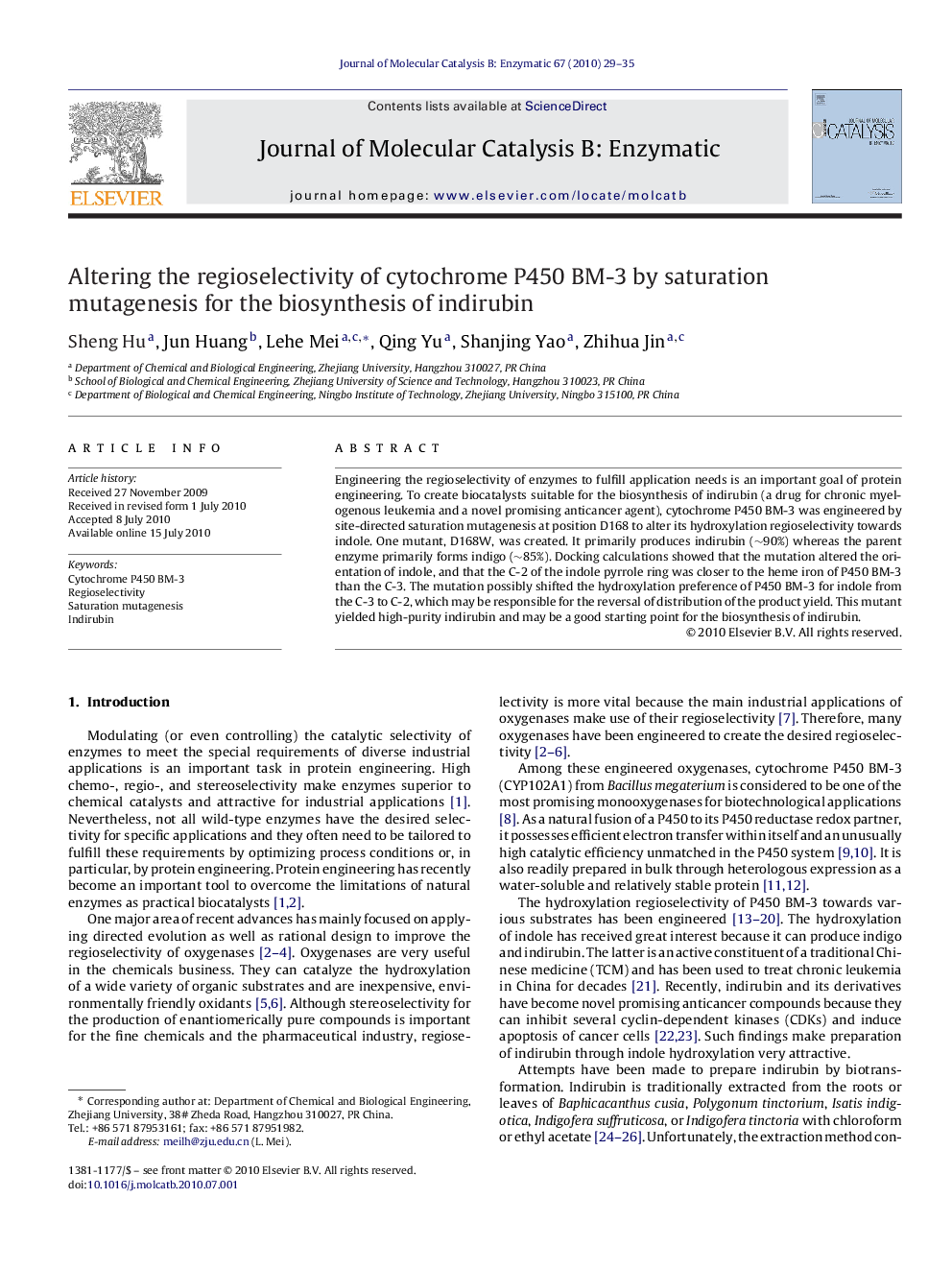| Article ID | Journal | Published Year | Pages | File Type |
|---|---|---|---|---|
| 70864 | Journal of Molecular Catalysis B: Enzymatic | 2010 | 7 Pages |
Engineering the regioselectivity of enzymes to fulfill application needs is an important goal of protein engineering. To create biocatalysts suitable for the biosynthesis of indirubin (a drug for chronic myelogenous leukemia and a novel promising anticancer agent), cytochrome P450 BM-3 was engineered by site-directed saturation mutagenesis at position D168 to alter its hydroxylation regioselectivity towards indole. One mutant, D168W, was created. It primarily produces indirubin (∼90%) whereas the parent enzyme primarily forms indigo (∼85%). Docking calculations showed that the mutation altered the orientation of indole, and that the C-2 of the indole pyrrole ring was closer to the heme iron of P450 BM-3 than the C-3. The mutation possibly shifted the hydroxylation preference of P450 BM-3 for indole from the C-3 to C-2, which may be responsible for the reversal of distribution of the product yield. This mutant yielded high-purity indirubin and may be a good starting point for the biosynthesis of indirubin.
Research highlights▶ The regioselectivity of P450 BM-3 to indole is altered by saturation mutagenesis. ▶ The saturation mutagenesis is carried out at a non-active site. ▶ A mutant primarily produces high-purity indirubin (∼90%) has been created. ▶ The mutant is different to other P450 BM-3 variants mainly produce indigo.
